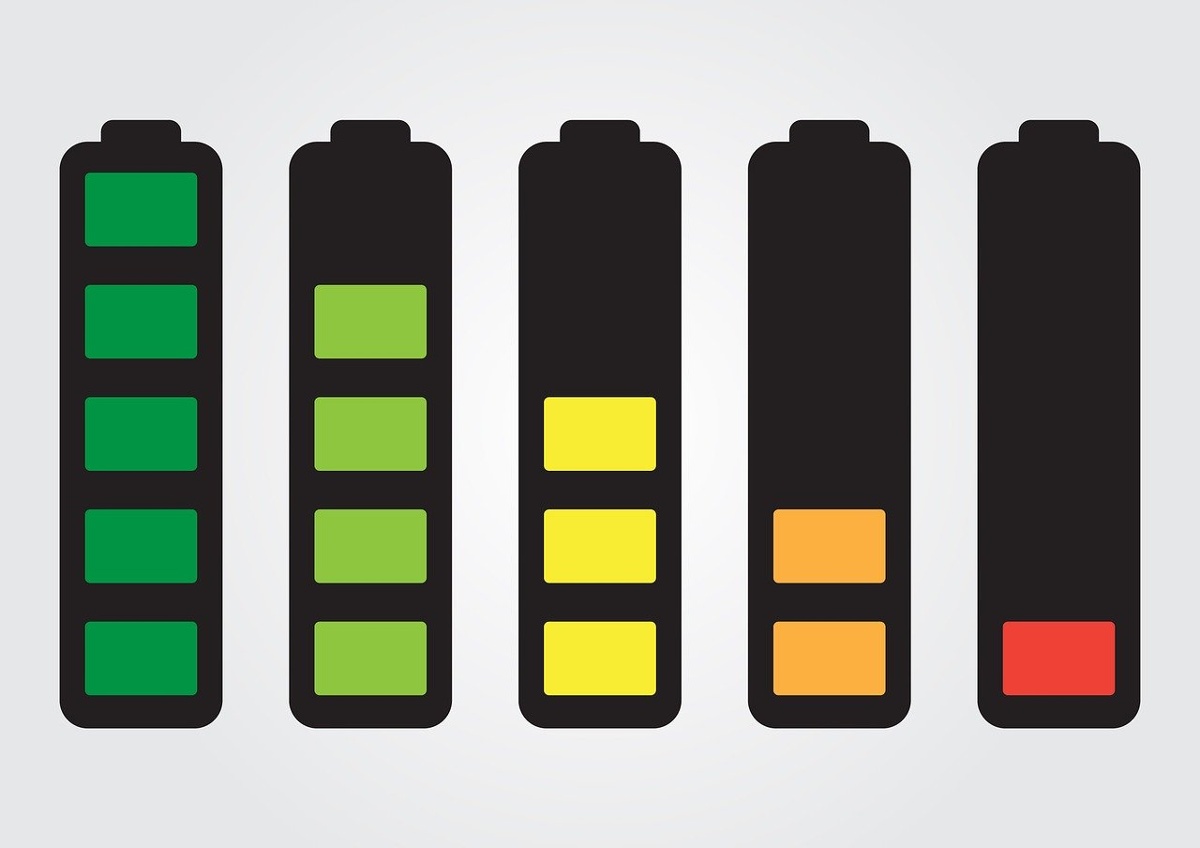Sick and Tired of Societal Norms
My Mama used to say that a person will change once they are sick and tired of their circumstances. I just want to know when will society be sick and...

Our black clients eloquently express their experiences and how those experiences affect their day-to-day lives, yet we may inadvertently overlook the depth of their narratives because of English communication differences. This realization dawned on me when communicating with individuals from different cultural backgrounds and witnessing the disconnect. Sometimes the issue was a translation issue and other times it was racism.
Miscommunication occurs when a Black person speaking African American Vernacular English (AAVE) has their message translated into general American English (g/mAE). AAVE is frequently mischaracterized as substandard American English and therefore individuals often interpret the message through their own understanding of the functions of the American English language. In doing so, they lose the essence of the message. Just as Hebrew and Swahili phrases lose their meaning when translated into general American English(g/mAE), the same can be said for AAVE.
AAVE is to blackness as American English is to whiteness. Similar to how individuals speaking Spanish are often pressured to switch to American English and unfairly judged as less intelligent, the same discriminatory attitudes persist towards Black individuals using AAVE. Also important to note, a person of color can share the same sentiments about AAVE as a non person of color.
When engaging with individuals from my cultural background using African American Vernacular English (AAVE), a unique and rich linguistic tapestry unfolds. AAVE is a distinct and clearly defined dialect of American English. It is complete with its own grammatical frameworks and intricacies. The incorrect labeling of AAVE as inferior English rather than recognizing it as a dialect of English, similar to Australian English, Canadian English, Welsh English, etc. stems from deep-seated racist beliefs about the intelligence and capabilities of Black individuals. It shares similarities with Romance languages, Slavic languages, and widely recognized complex languages. Now, I will have you know that AAVE shares commonalities with all of these. French, Spanish, and Portuguese have grammatical structures that involve using double negatives. Japanese, Russian, and Arabic have copula absence (i.e., She working). Swahili, Russian, and Hebrew have verb aspect (differentiates between an ongoing action versus a completed action). AAVE has grammatical structures that include double negatives, copula absence, habitual be, and constant cluster simplification. Like the Swahili and Hebrew languages, a simple phrase or colloquial expression in AAVE, the essence of my message is effortlessly understood by those familiar with AAVE, showcasing the depth and complexity of this language. AAVE is complex, rule bound, systematic, and relevant to the location in which the language is being spoken just as any other language or dialect of that language.
Black people are exposed to both subtle (micro aggression) and overt (macro aggression) forms of aggression that persist regardless of whether we use AAVE. Remarks such as "you talk white" or "stop talking black" are examples. There is shame and "otherness" associated with both remarks. The remarks are associated with harmful stereotypes that perpetuate the idea that white ideals about proper communication should be the standard. Therefore, one must adhere to white linguistic norms to be respected and understood.
To cultivate a sense of belonging among colleagues and clients, it's essential to normalize AAVE. Consider your marketing strategies, continuing education pursuits, assessments, and intake forms. How do you address code-switching in your workplace? Do you promote open communication or notice when a client seems to be self-censoring? How do you manage feedback from clients and colleagues regarding communication impacts? Or do you allow language to become an unspoken issue? By creating spaces for AAVE, our clients and colleagues can feel more at ease, experience a sense of safety, and reduce burnout from code-switching. If you view AAVE as unprofessional, I encourage you to reflect on your biases. Why is AAVE deemed unprofessional? Consider how your perceptions of this English dialect shape your understanding of communication.
I realize that some of you may still have doubts about the impact of AAVE vs. g/mAE in clinical settings, so let me share a personal insight from Black culture that can be easily verified through research, online sources, or even social media platforms like TikTok. When a Black woman is asked, "Hey, you're quiet. Are you okay?" it might seem like a simple question to someone who primarily speaks general American English (g/mAE). However, when this question is interpreted through the lens of AAVE, it can feel like a subtle nudge to change who we are to make others comfortable. It's a gentle reminder of the pressure to code-switch and perform. This also occurs when a Black individual expresses themselves passionately in AAVE. It's quite common for a Black person to use their whole body while speaking, similar to how we observe Italians, Spanish, and French speakers do. However, for Black individuals there's an expectation to conform to the norms of American English—to smile while disagreeing and to soften our words. If we don't, we're often labeled as ghetto, aggressive, and suddenly, there's a conversation about how our authenticity made others uneasy.
If you are "helping" Black people without understanding black people, you will harm Black people. Just as neurodivergent individuals need to be understood and experience relief when they can use fidgets or stim openly, Black individuals feel at ease when they can use AAVE without facing judgment or repercussions. If your clinical setting does not accommodate AAVE, then it is not a suitable environment for Black individuals, and you should reconsider working with this community. Failing to provide this space can harm a group that already faces disproportionate harm from helping professionals.
For those of you that have chose to stick around, here is a crash course into AAVE.
Habitual Be and Stressed BIN address Tense
Habitual Be
The concept of habitual "be" may seem unconventional at first, but it offers a unique perspective on language and communication. For instance, phrases like "It be that way sometimes" may not align with traditional grammar rules, but they convey a nuanced meaning of occasional occurrences. Similarly, saying "I don't be going dancing" doesn't imply a complete avoidance of dancing, but rather a statement of infrequent participation. This linguistic approach, akin to languages such as Mandarin, Russian, and Hebrew, showcases the diversity and depth of communication styles.
Stressed BIN
Stressed "BIN" is a linguistic feature in African American Vernacular English (AAVE) that serves to emphasize that an action or state has occurerd or has been ongoing. This usage is distinct from the unstressed "been" in general American English, which typically indicates a past action without the same emphasis on duration or continuity. For instance, when someone says, "They BIN dating," it conveys that the couple has been in a relationship for a considerable amount of time, highlighting the longevity of their dating status. Similarly, the phrase "I BIN finished" suggests that the speaker completed the task a long time ago, underscoring the extended period since the completion. This feature of AAVE not only adds depth to the expression of time but also enriches the narrative by providing a clearer picture of the duration and continuity of actions or states, reflecting the unique and complex nature of this dialect.
A copula is simply a linking word in a language that refers back to the subject, and in English, our most common copula is the verb “to be.” AAVE frequently omits “to be” in certain contexts. This can be used to refer to location as in “They in the back,” or it can also be used before an adjective, as in “She smart.”
Something interesting to note here is that the consistency of this structure can be illustrated by using it incorrectly. While the “is” and “are” forms of “to be” are commonly dropped, this does not happen with the first-person form (“am”), as a phrase like “I tired” would ring incorrect.
The usage of double negatives is standard in many languages, including Spanish, where the phrase “I didn’t see anything” would correctly be said “Yo no vi nada” (I didn’t see nothing).
This is not the case in English, and generally the use of double negatives becomes a positive again, though with a great deal of nuance. For example, saying “I mean, he’s not unattractive” in fact implies that he may be just a bit unattractive.
In AAVE, however, double negatives are used for emphasis rather than hedging a statement. For example, “You never be doing nothing to help out!” doubles the negatives and in essence doubles the effect.
Spanish, Italian, and several other languages exhibit the use of double negatives to emphasize negation, a concept known as negative concord in linguistics. This linguistic phenomenon allows for a more nuanced and intensified expression of denial or negation. The presence of multiple negatives in a sentence does not result in a positive affirmation, as in English, but rather reinforces the negation. This feature adds depth and complexity to these languages.
Your clients are communicating the intensity of their symptoms, their treatment objectives, and their coping mechanisms. However, if you are unaware that AAVE encompasses aspects of events (ongoing, habitual, completed), tense (timing of the event), and mood (attitude or intent towards the event described in a verb), you are overlooking the clinical importance of what is being conveyed. Consequently, your session documentation may be inaccurate, and the language used to describe the session could be potentially harmful. You are perceiving it merely as "bad English" and neglecting to engage with curiosity towards your clients. You're misunderstanding will fuel misattunement and your clients won't get what they need from you.
Racism can make you perceive what is normal and natural in other cultures as inferior to white culture. It fosters disconnection and suppresses curiosity. What can you do? Take a proactive approach by acknowledging the potential for unintentional confusion or misunderstanding. Encourage corrections or requests for clarification openly. Question the function of code-switching and address those that require it although undervaluing these same individuals because of their use of AAVE. Be prepared to lose colleagues, clients, and opportunities to uphold counseling principles. By doing so, you will enhance access for minority populations and allies seeking professional help. Finally, being open to learning more about other cultures will deepen your respect for advocating and sharing knowledge about diverse cultures and their importance.

My Mama used to say that a person will change once they are sick and tired of their circumstances. I just want to know when will society be sick and...

I am inviting you, to step inside my mind. Let’s take a deeper look inside me and how I see therapy. I use creative works to provoke thought (or...

I don't subscribe to the belief that to be nice, I must compromise my values and boundaries. Diminishing the most important parts of yourself to fit...